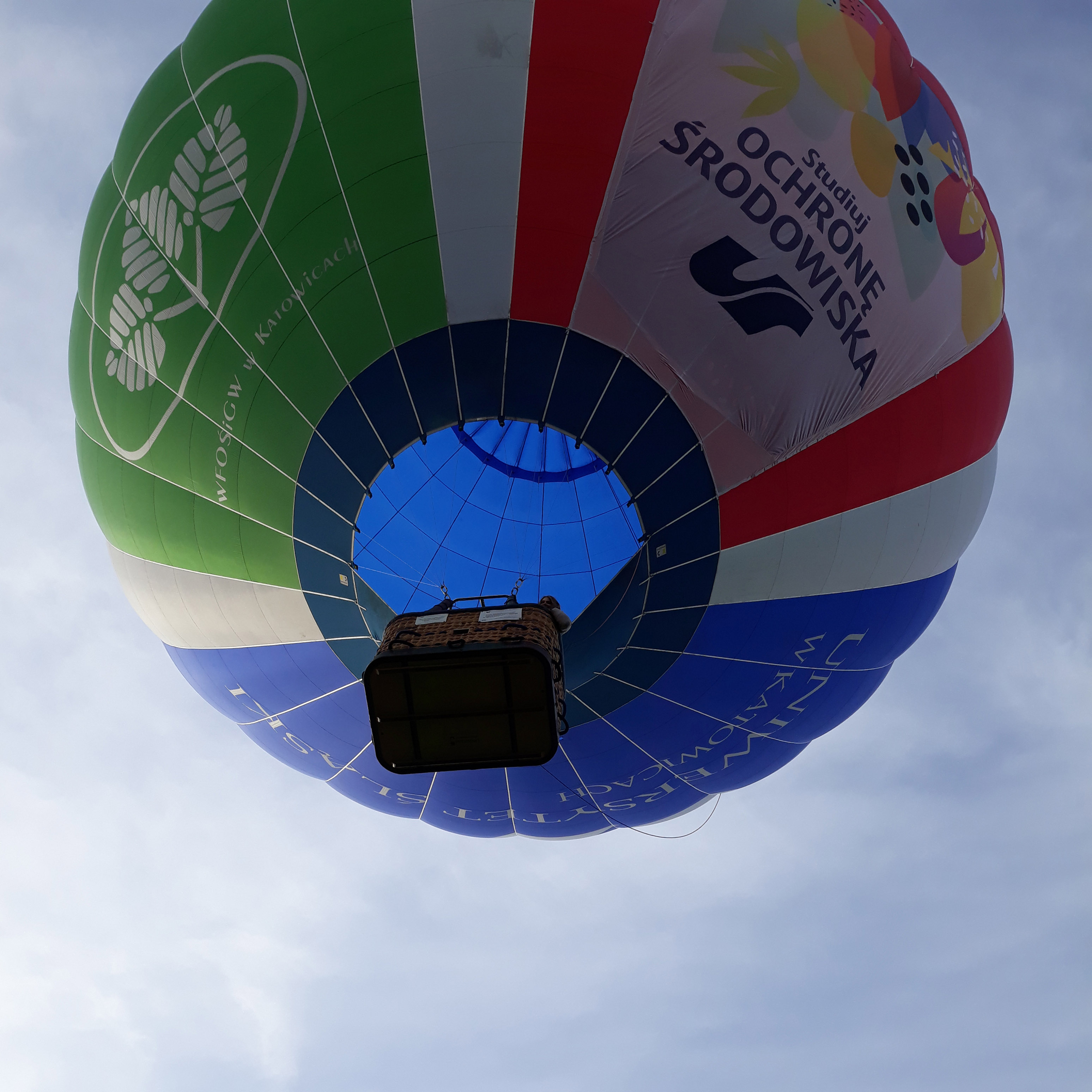Research offer
The Overhead Mobile Laboratory operates as part of the University Laboratories for Atmosphere Control (ULAC) of the University of Silesia in Katowice.
It consists of a hot-air balloon Lindstrand SS1-120 marked SP-BUS, equipped with a unique research and measurement system.
Performing tests and analyses
The measurement can be performed at different heights in a specific vertical and horizontal transect. The scope of tests and analyses that can be performed includes:
- measurement of the size of particles suspended in the air within the range of 0.3-10 µm;
- determination of the concentration of gathered particle fractions, including PM1 particulate concentration; PM2.5; PM10 and TPS (total suspended particulate);
- measurement of air temperature, pressure and humidity at selected heights above the ground surface in different atmospheric conditions, taking into consideration the height of measurement performance that is important e.g. in temperature inversion conditions, which fosters accumulation of pollution;
- measurement of ozone concentration;
- measurement of the concentration of the following atmospheric gases: CO2, NO, NO2, NH3, SO2, benzene, formaldehyde and measurement of the total content of volatile organic compounds (VOC);
- measurement of soot concentration;
- collection of pollutant samples for chemical, biochemical, crystallographic, roentgenographic and other analyses in stationary laboratories of the University of Silesia concentrated within the ULAC structure and forming a separate Apparatus for Testing Atmospheric Pollutants (ABZA), which allows for:
- identification of sources of atmospheric pollution;
- identification of technological processes leading to pollution;
- determination of morphology, chemical composition and content of organic compounds adsorbed on the surface of dust particles;
- collection and analysis of nanoparticles within the range of 10-300 nm;
- collection and analysis of flora pollen and fungal spores,
- collection and analysis of zooplankton;
- collection and analysis of microorganisms.
Contact Us
Find out more about our analyses and research







